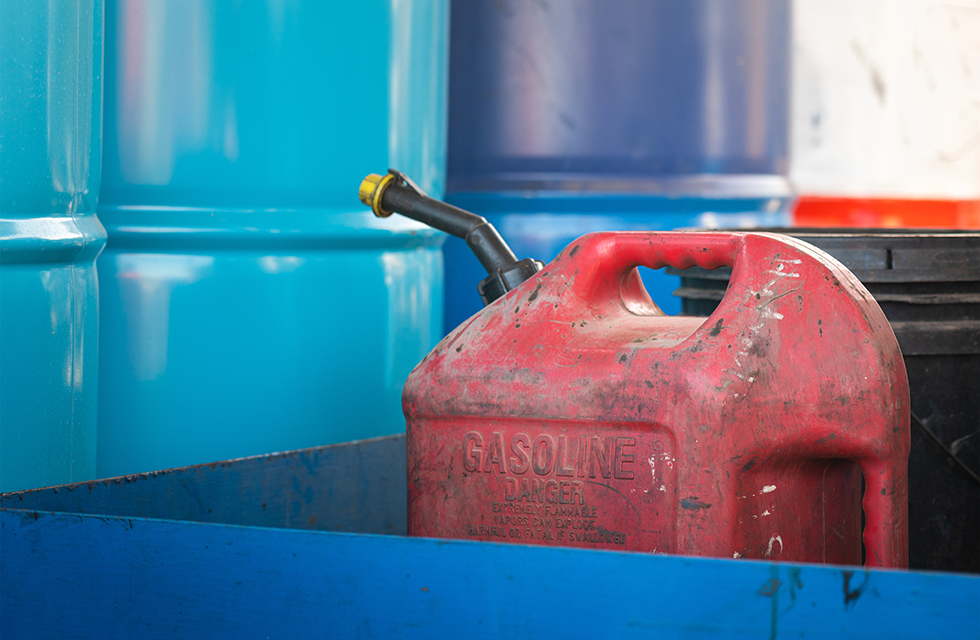National Burn Awareness Week Highlights the Dangers of Flammable Liquids

Each year, an estimated 400,000 people, in the U.S., sustain burn injuries requiring medical treatment. Today, due to significant research and medical advances, 96.8 percent of these individuals will survive but will have endured serious scarring, life-long physical disabilities and adjustment difficulties.
National Burn Awareness Week occurs annually during the first full week in February. This year’s event, from February 4 – 10, will focus on Flammable Liquid Burns. Flammable liquids are extremely hazardous due to their ability to produce vapors. Most flammable liquid vapors are heavier than air and can travel distances. When the vapor encounters an ignition source such as any open flame, i.e., matches, cigarettes, cigarette lighter, flames, gas appliances and heaters, the vapor easily and rapidly ignites. Liquids such as gasoline and other fuels, and solvents such as paint, ink, adhesives, and cleaning fluids give off a flammable vapor and become more hazardous at higher temperatures than at room temperature — when mixed with air they can ignite or explode. It’s not the liquid that ignites, it’s the vapors that burn.
The average American household contains numerous flammable or combustible products with labels alerting consumers of the dangers of fire or explosion if not properly used, stored or cleaned up if spilled. Some examples of flammable liquids that may be lying around your home are nail polish remover, rubbing alcohol, lighter fluid, aerosol cans, linseed oil, gasoline, paint thinner and turpentine. In most cases, these items are harmless, however, if not properly stored they could ignite and cause a fire or other immediately call your local Poison Control Center or the National Poison Control Hotline (1-800-222-1222). For chemical burns of the skin or eyes, flush with cool water and call 911.
Storage Requirements
- Avoid storing flammable liquids on high shelves.
- Store items in dark and cool spaces; avoid direct sunlight.
- Store liquids in a well-ventilated area.
- Use the right containers for liquids such as gasoline or kerosene. Look for canisters labeled “FM Approved” or “UL Listed (or Certified).” If possible, store these items outside in a small storage shed.
Should a fire involving flammable liquids occur in your home, you must use the correct fire extinguisher to properly extinguish these types of fires. There are five primary types of fire extinguishers, each designed to put out different kinds of fires. The classifications are:
A: For use with ordinary materials like cloth, wood, and paper. (homes and businesses)
B: For use with combustible and flammable liquids like grease, gasoline, oil, and oil-based paints. (homes and businesses)
C: For use with electrical equipment like appliances, tools or other equipment plugged into an outlet. (homes and businesses)
D: For use with flammable metals (factories)
K: For use with vegetable oils, animal oils and fats in cooking appliances. (restaurants, cafeterias, and catering business)
However, there are multipurpose fire extinguishers that most home improvement stores carry that cover Class A through Class C fire extinguishers and may be labeled “B-C” or “A-B-C,” for use in most types of home fires. When purchasing a home fire extinguisher:
- Always look for the “UL Listed” or “ULC Listed” label on a fire extinguisher to ensure it is certified for use by a nationally recognized testing laboratory.
- Always look for the fire extinguishers classification label.
Fire extinguishers vary in size and weight; therefore, it is recommended to select the largest fire extinguisher that a user can safely and comfortably operate.
When using a fire extinguisher, there are 4 basic steps, called PASS:
- Pull the Pin.
- Aim at the base of the fire.
- Squeeze the trigger.
- Sweep side to side.
If you would like additional training or have further questions concerning fire extinguishers, contact your local fire department.
For more information on flammable liquids and flammable liquid burns, visit the American Burn Association www.ameriburn.org, the U.S. Fire Administration usfa.fema.gov and the
National Fire Protection Association nfpa.org.